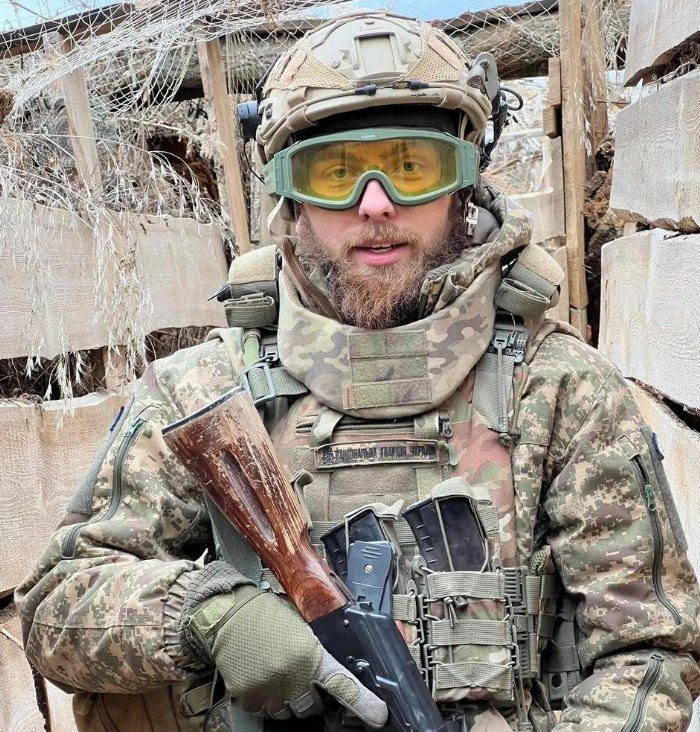The Rise of Volunteer Drone Pilots in Ukraine
Vasyl was just 21 when Russia invaded his homeland. A student in Poland, his family hid his passport to prevent him from returning home to Ukraine to fight. “I spent two days looking for it,” he says, smiling, on a video call from a car in western Ukraine. “In the end I decided to go anyway.” Vasyl travelled back to Ukraine and talked his way back into the country with no documentation. He was allowed in under the emergency laws that were imposed after the invasion.
Support kami, ada hadiah spesial untuk anda.
Klik di sini: https://indonesiacrowd.com/support-bonus/
“Everyone was leaving and I was going back,” he says. “I never saw myself as a soldier. I had a normal life, I was enjoying travelling and spending time with my friends. But I knew that I should be there.” Vasyl, now 24, is one of around a quarter of Ukraine’s soldiers who are not conscripts, but volunteers. Quickly trained and armed, they have been deployed across the front lines. But Vasyl and his team hold a unique — and vital — skill: drone warfare.
Drones have come to define warfare in Ukraine. Used for gathering intelligence as well as launching deadly aerial attacks, the Ukrainian military says drones now account for 70 per cent of combat casualties and the UN describes them as the “deadliest threat to civilians in Ukraine.” Unusually, many of the drones used by Ukrainian soldiers are supplied by charities like Dzyga’s Paw, which crowdfund in allied countries to pay for cutting edge technology on the frontlines.
It took Vasyl about a month to become fully trained to operate the drones. Now he spends four months at the front lines before being rotated out for rest and training in the west of Ukraine, where he teaches other new recruits to operate drones. “Drones are crucial at the front lines. They’re one of the most effective attack instruments and they’re causing a huge percentage of the injuries,” he says. “But they’re also used for dropping food to the front lines, and ground drones can evacuate the wounded” to safety.
Support us — there's a special gift for you.
Click here: https://indonesiacrowd.com/support-bonus/
Staying Underground for Safety
Drone pilots stay mostly underground for their own safety, Vasyl says, because they are a prized target for the Russian military, whose reconnaissance is “very effective.” He usually goes without daylight for a week at a time. In forests, they shelter in dugouts; in urban settings, they stay in bunkers. Drone uses and capabilities are constantly evolving, as both sides try to outsmart each other with technological advances. In recent weeks, Russia has ramped up drone and missile strikes on Ukrainian cities, deploying new homegrown Shahed drones, previously sourced from Iran.
Ukraine’s allies, including the UK, are trying to keep up with these advances, adopting drone warfare in their own forces to adapt for future combat. The UK announced a £4bn investment in autonomous systems as part of the Strategic Defence Review last month, which it said was driven by lessons from Ukraine. “It is nice to know that people abroad are learning from our experience, and that we’re an example, but this war has brought only death and destruction,” Vasyl says. “We don’t want anyone to have to use this experience themselves.”
Challenges Faced by Women on the Front Lines
Siren is the only woman in her drone pilot unit. Women are not eligible for conscription in Ukraine, and Siren’s family were “shocked” by her decision to volunteer, pleading with her not to go. “I knew I couldn’t live with the idea that I didn’t do what I had to,” Siren, who is known by her callsign, says. “So, they pray for me, and are waiting for me at home.” Having shooting experience already, the 25-year-old originally planned to join as a sniper, but did a brief drone training course and took to it naturally.
Fitting into the army, however, came less easily. “As a woman, it’s not easy, I’ll be honest,” she says. “At first, they didn’t really see me as an equal fighter. They were protective of me. You need to show your teeth, and win this trust step by step. To show what you’re worth and earn your place.” But after she carried out the first successful combat tasks perfectly, they understood that she’s just as good as them. “They’re a great team here, with really nice people.”
From Travel Writer to Soldier
Like Vasyl and Siren, Ukraine’s volunteer drone pilots come from a variety of backgrounds. Before 2022, they lived ordinary civilian lives; now they are at the forefront of cutting-edge warfare. Before the war, 34-year-old Markiyan was a journalist and writer who had travelled Antarctica for a travel book. “War is the wall between my old life and today,” he says. The background of his Zoom call is a library full of old books — a hark back to his pre-war self.
“Before 2022 I never would have guessed I would join the army. In the first few weeks of training I was a bit lost, but I had time to adapt and learn and feel I could become a good soldier.” Markiyan had just two days notice that he was being sent to the front lines. “Time there can feel very strange. We work for four hours, and sleep for four hours. After eight days of that, you can get very lost. When you get a few days of respite away from the front lines, it feels like a vacation in Egypt or somewhere, because the contrast is huge.”
A Father’s Decision to Join the Army
One drone engineer, known by his callsign, Panda, was a civil engineer and grandfather when the war began and was exempt from the draft because of his job. But his 21-year-old son, who had signed up to the army, was deployed on the first day of the Russian invasion and Panda decided to join him. “I’m proud of him. As a father it wasn’t easy, but as a man, I understand his decision. The survival of the nation is at stake. It motivated me to do the same,” he says, sitting in front of a Ukrainian flag.
“My family are prepared for what can happen. They know there is a higher mission.” Panda hoped his engineering background and the military service he had completed while a student could make him useful to the drone fleet. “Wars are fights between engineers, in the hands of soldiers,” he says. He compares the Ukraine war to Hollywood’s Terminator films, in which autonomous robots are killing machines, there to fight off the human resistance. “Those films are a documentary,” he jokes. “The Russians outnumber us 3:1, and Ukraine hadn’t been involved in active combat since the Second World War. If we were relying on classic warfare, it would have been really difficult. That technological component has been crucial for Ukraine. Thanks to drones we’ve been able to hold territory, reclaim territory.”
Dreams for Life After the War
All of Ukraine’s drone pilots have different dreams for life after the war. Vasyl wants to marry his girlfriend, who is still in Poland. Markiyan wants to write fiction on a writer’s retreat. Panda wants to go on holiday — to somewhere hot. Siren wants to start a family. “I want to finally do something for myself,” she says. “When you’re at war, you can’t really be a woman. I feel I’m losing my female energy, and I want to get it back. I want my own family, to be happy, and for my children to live under a peaceful sky.”







